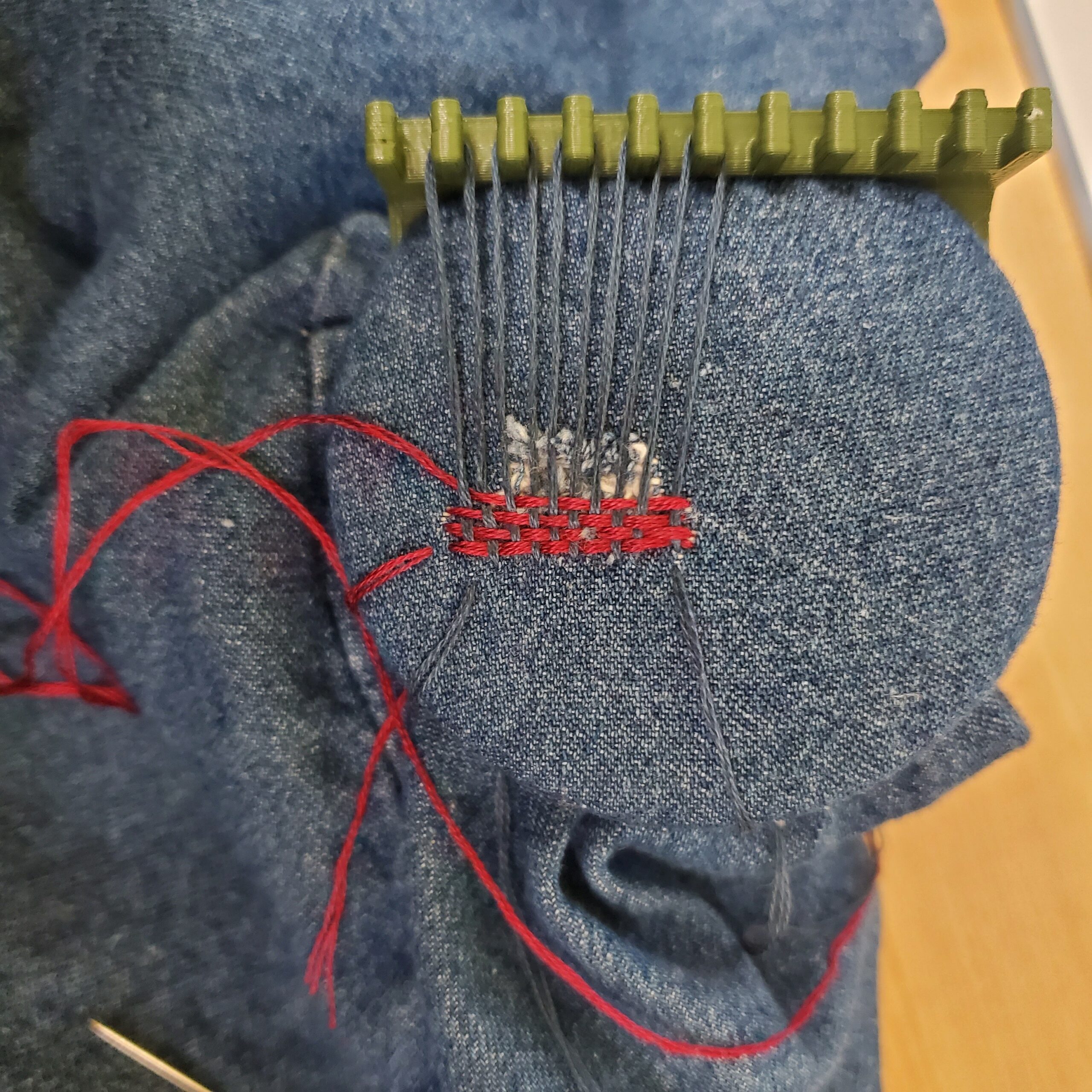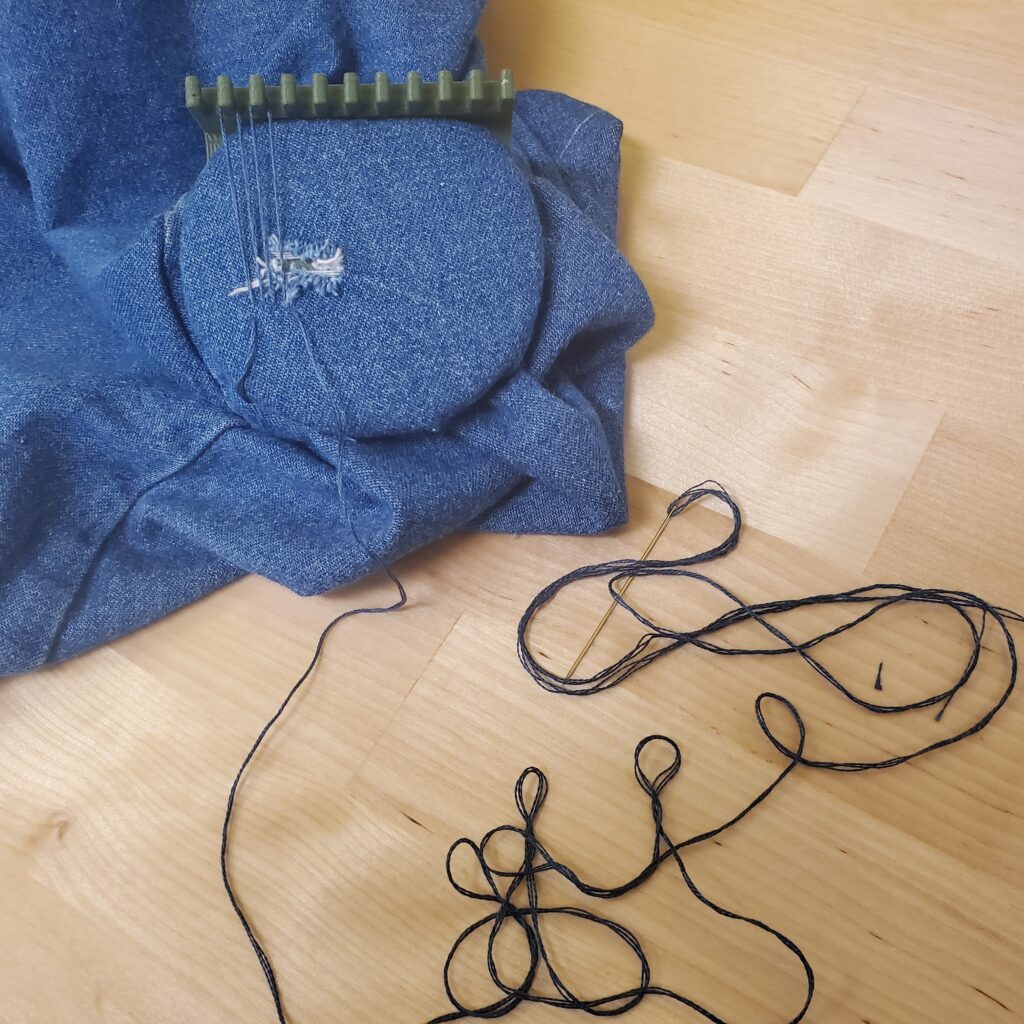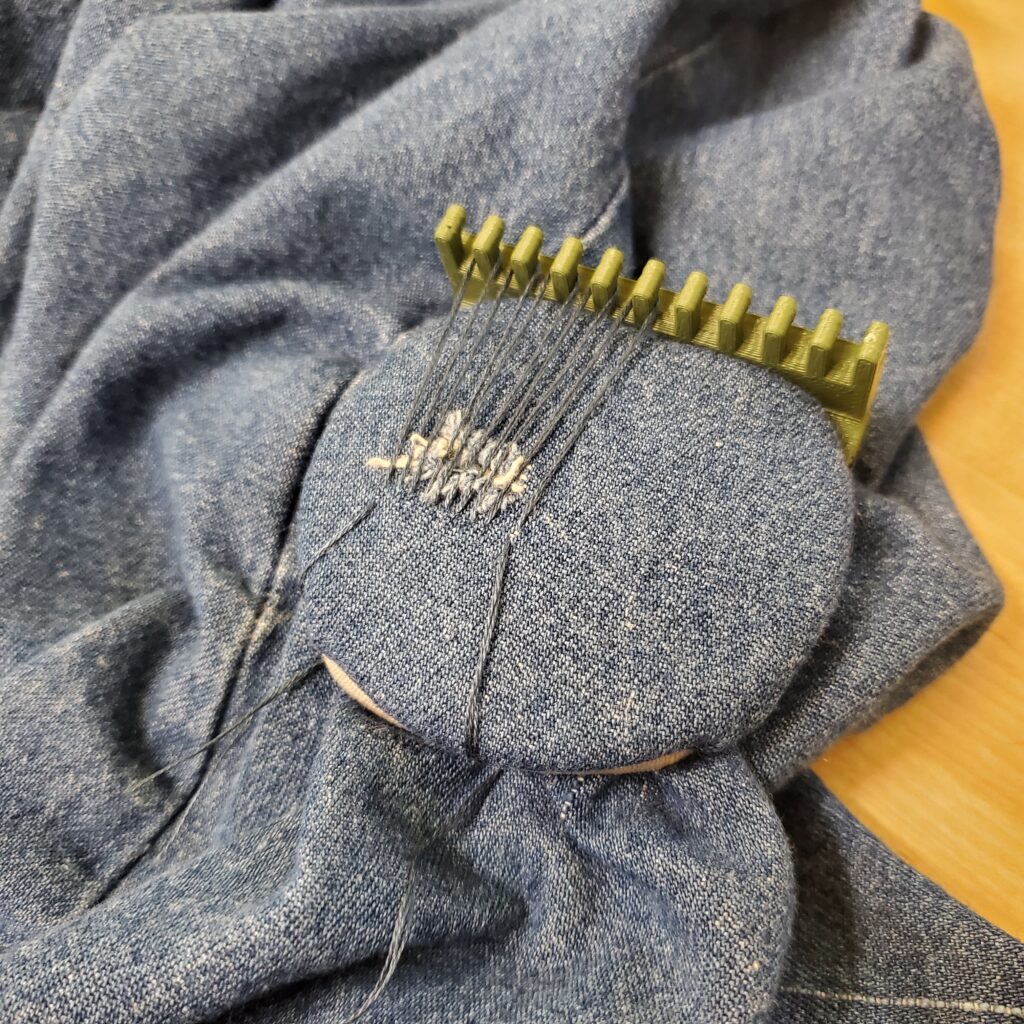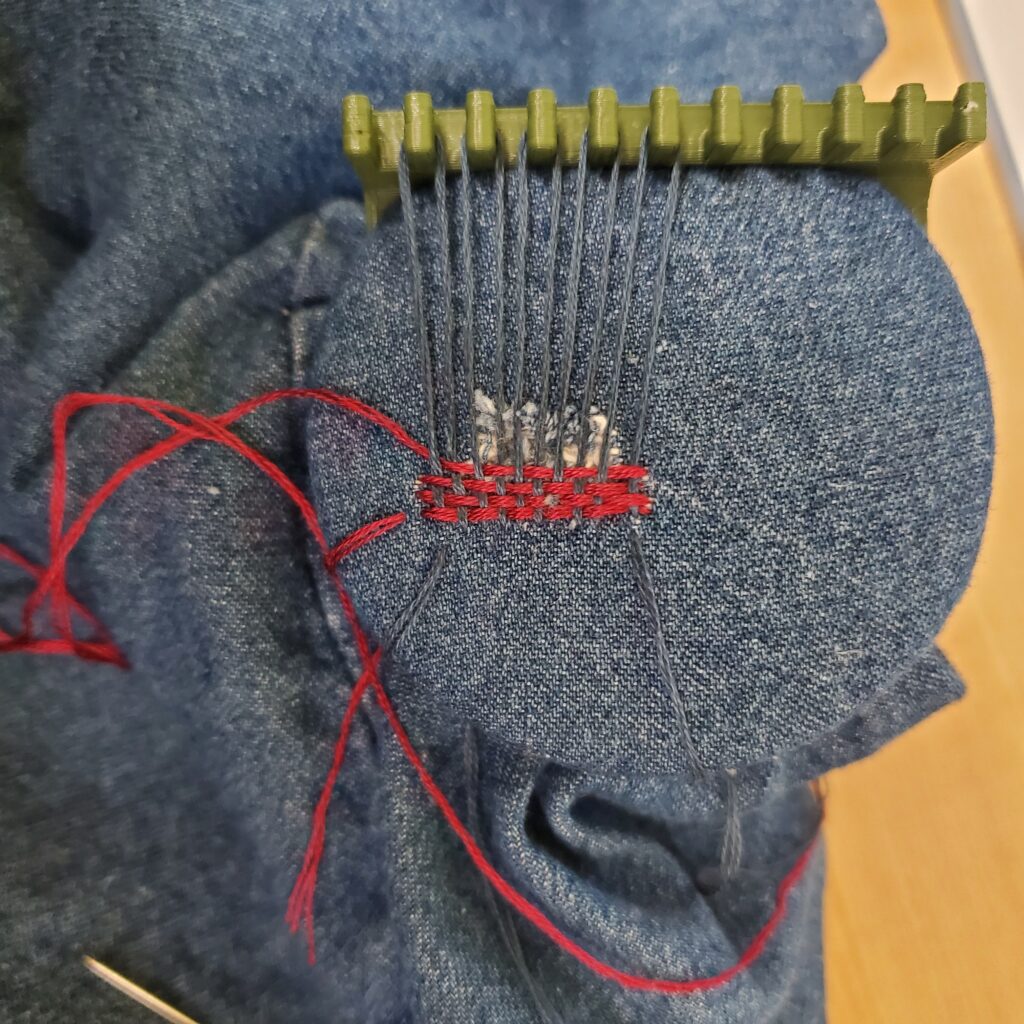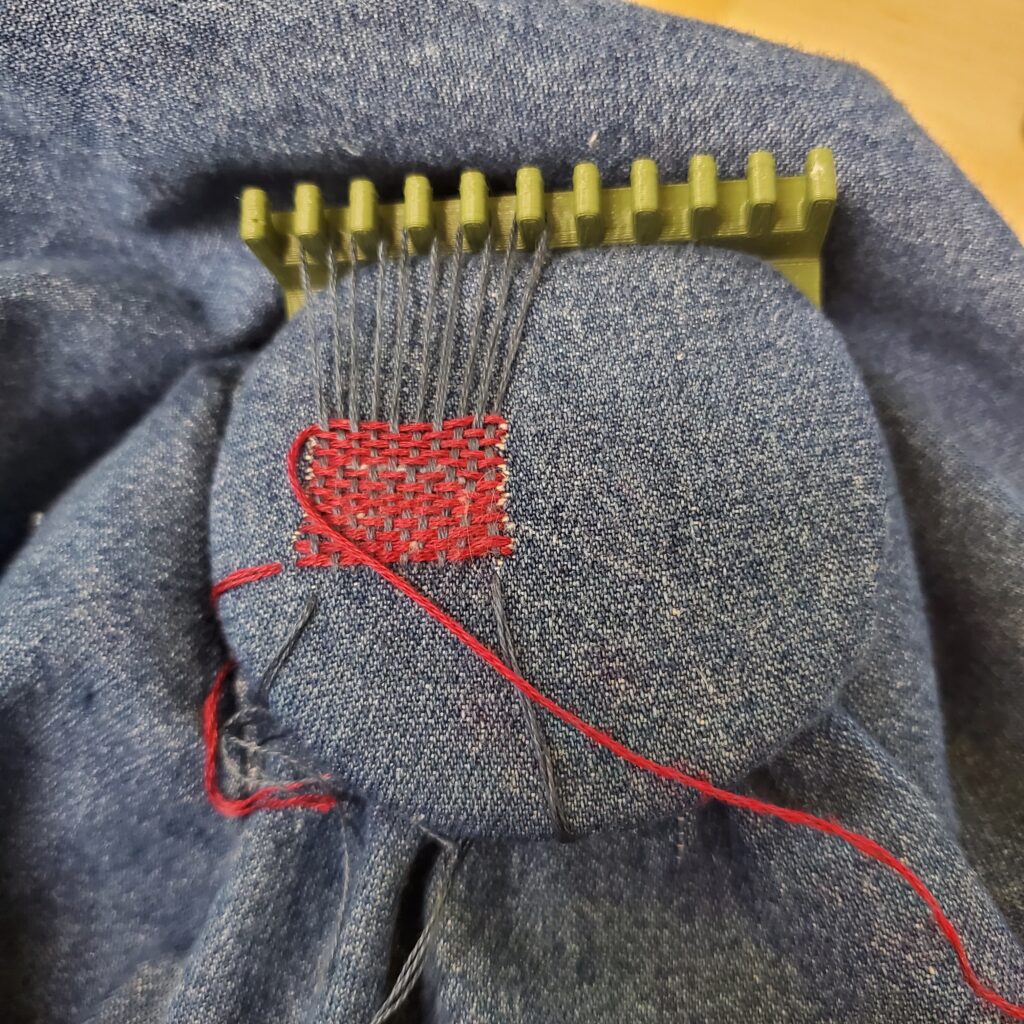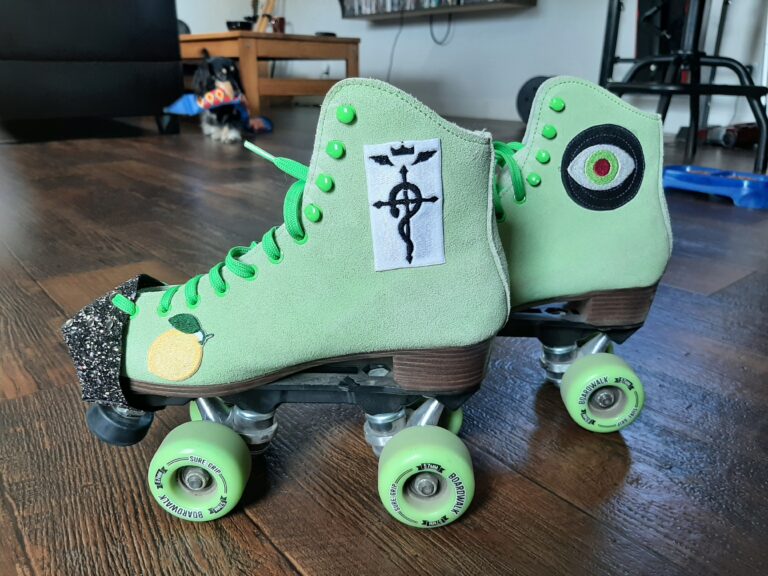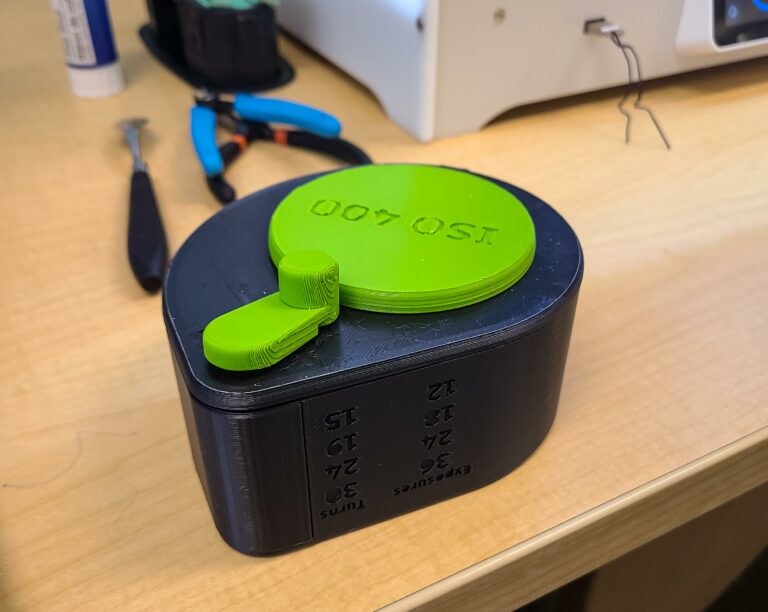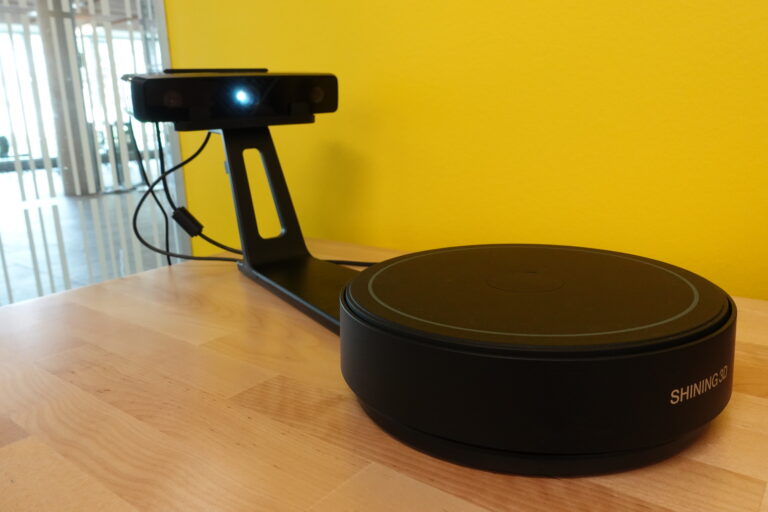Darn! My skirt had a hole: 3D printing a darning loom
Written by Kirsten Glass
About a year ago scrolling through one of those endless lines of online videos I came across someone using something called a Speedweve to fix a hole in their jeans. I thought it produced a very pretty patch and scratched that Fisher Price loom itch that I’ve had since I was five. Then I promptly forgot about it.
Fast forward to now, scrolling through my social media it popped up again, but this time luckily, I had access to a Makerspace here at TRU! So, I did some research and apparently, the first darning loom in this style appeared around 80 years ago. This style made it easier for people to repair their knit or woven objects. At the time during the war when extra materials were scarce it was very important to be able to mend and reuse things as long as possible. Along the way, I went digging for 3D files to see if someone had already made an STL file I could use, and I found 2.
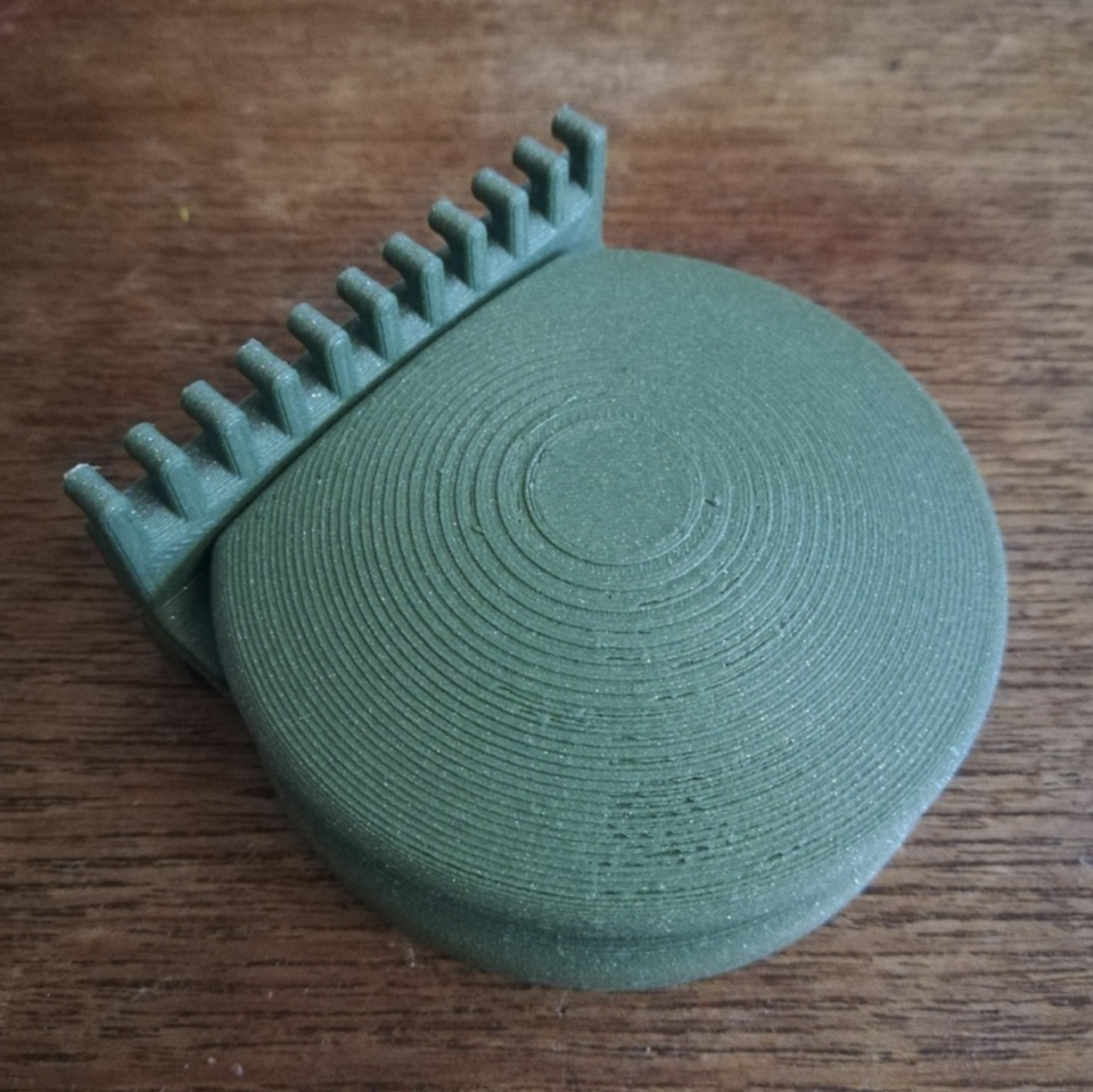
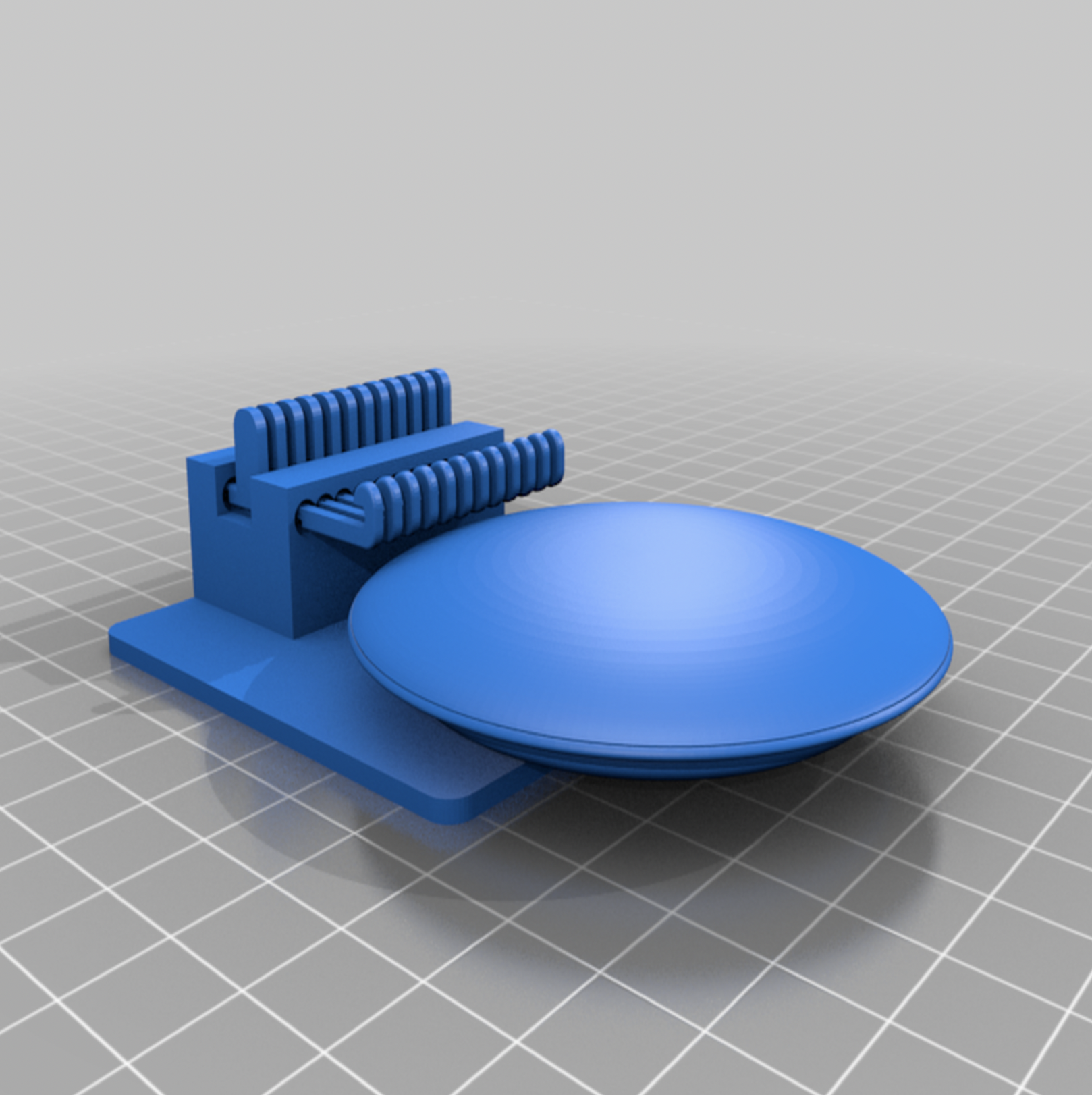
While I have printed both so far, I started using the simpler of the two. Using this version means I must weave up and down between the vertical threads as this model doesn’t switch back and forth like the traditional darning loom print, but I preferred its simplicity.
Unlike many of the videos, I watched I ended up splitting my embroidery thread (meaning using only 3 of the 6 threads that create the embroidery thread). I did this so that the finished patch would be a similar thickness to the fabric of the skirt. Overall I think the patch turned out quite nicely, and in the future I’d like to experiment with more colours and the other loom to see how big the difference really is.
To learn more about darning you can check out these videos:
The video that inspired me to learn
Learning how to darn with a darning loom

